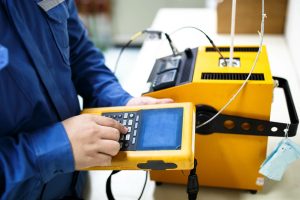Comprehending Instrument Calibration: Beyond Just Data
Imagine that your grandmother’s recipes always turn out perfect because she has the exact amounts of sugar or flour memorized. If she is using scales which haven’t had a calibration since Nixon’s time in office, then all of those old recipes could fail. Our tools need to be calibrated so they can accurately measure the ingredients. Just like Grandma’s scales, which are still able to tell an ounce apart from a pound. Visit our website and learn more about Calibration.

What is calibrating? Imagine a librarian that needs to be able to locate each book on the shelves. Someone has to check the position of each book against the new library system if the system changes. Calibration is the same. It involves comparing your instrument’s numbers with known, correct values. We want to make sure that we are not blindly flying.
Have you ever wondered why the temperature on your digital thermometer is 80 degrees but it feels as cold as a tundra when outside? You might want to check the calibration! You’re basically matching what the device tells you to what you know, like matching a picture of a piece on a box with its description.
Let’s avoid getting lost in the details. The nitty gritty of calibration can be as complex as spaghetti junction. The calibration is usually a regular task that’s done after the instrument has been used for a period of time. It is similar to a pitstop for race cars, as it ensures that the performance stays smooth and constant.
You may need to adjust a device at times. It’s not just about checking, but also about adjusting. You can adjust the instrument by comparing it to a set standard. You can tune a guitar by plucking and twisting until it is pitch-perfect.
Precision is key. A quick dash can cause things to go wrong. Imagine engineers who are launching rockets. Imagine their instruments being off just by a tiny bit? Catastrophic is an understatement. Accuracy becomes a necessity, not just a preference.
What is a procedure without the equipment? It’s not possible to calibrate at random. There are calibration standards or values that act as the ultimate truth tellers. Gold is found in instruments that are able to trace their origins back to national standards. Traceability is important to ensure that all instruments sing from the same hymnal.
Who performs the calibrations? It’s not just any random person! There are certified technicians who work under accredited laboratories. They are the instrument experts, with their ultra-precise equipment and vast knowledge. These are the people you call when your pressure gauge or thermometer isn’t working.
Healthcare and manufacturing industries cannot afford to make a mistake. If you work in the pharmaceutical industry, for example, an incorrectly calibrated scale could throw your formulations off completely, leading to inefficiency or, worse, safety concerns. Let’s not even mention the aviation industry. The WHISKER on every instrument must be accurate, otherwise we could put lives in danger.
Calibration is not just a sprinkle of fairy dust. You’re instruments are working. You have to get your hands dirty and do the math. Each reading must be as accurate as a drum. It’s a serious matter, but someone has to do it.
But it is not all bad news. A pressure cooker that is not calibrated correctly could result in a burnt dish, but one that’s been properly calibrated? The dinner is served smoothly. Let’s do calibration justice. The quiet crew behind the scenes is what keeps everything running. They are the unsung heroes who ensure that each measurement is perfect.
The next time you trust a digital thermometer, or weigh scales, remember the power of calibration. Without it, all measurements could be just a guess.
